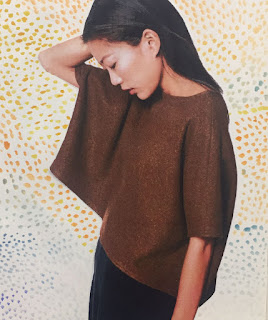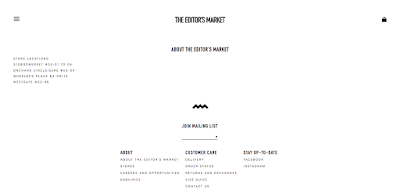Primary research was carried out including online and offline survey, the first one is by doing questionnaire for 50 people that fulfill all the possible target market for The Editor's Market, which is 15-30 years old, girls and women, having same style preferences that suitable for The Editor's Market itself, and also like to do shopping, especially in The Editor's Market.
Following the questionnaire, the writer will have some interviews with some women who aged 15-35 years old who currently shopping at The Editor's Market and like to shopping at The Editor's Market that willing to be asked about The Editor's Market more deeply about their preferences and the others thing for The Editor's Market campaign.
An observations was carried out about customer of The Editor's Market by visiting The Editor's Market for 1 week and see who's the potential customer of The Editor's Market and turns out most of the costumer are girls and young women around 15-30 years old but some of them go together with the older women(which probably their relatives), and they like to shop at The Editor's Market together with their friends or buy more than 2 pieces so they will get special price that such provisions have been made from first time the stores open. Every one hour, on weekday there's 10-12 people go in and out, and on weekday, at least 30 customers go in and out at The Editor's Market stores, especially in 313 Somerset and Cathay Cineplex.
The Result will be:
Questionnaire
Date: 13th February - 28th February
Total of people that answer the questionnaire = 50 people
Conclusion:
- Most of them are 15-20 years old(51%), follow by 21-35 years old(44.9%)
- 42.9% are a student and working(either self-employed or blogger)
- 59.2% said their shopping budget mostly <SGD500
- 51% young women spend <SGD 200 for clothing shopping
- As much as 83.7% of young women, their consideration of buying clothes are style and prices
- 46.9% said they preferred shopping when it comes to new arrival and discount
- 63.3% of women go shopping <5 times a month
- 56.15% said they are considering birthday promotion(discount) and membership card
- 50% of their style is Effortless and minimalistic which is very suitable for The Editor's Market
- 4 out of 50 people or 8.3% said they don't know about The Editor's Market
- 85.7% like to shopping at The Editor's Market
- 46.9% said they spend 1-2 times shopping at The Editor's Market every month
- 77.6% said they like The Editor's Market because of trendy style and affordable price
- 26 out of 50 people(48.9%) did not follow The Editor's Market Instagram
- 53,1% aware that The Editor's Market doesn't have any proper campaign/promotions/advertisement
Interviews:
Date: 1st March - 9th March
Total of people that join the interviews= 5 people(women) from 15-35 years old being interviewed.
Conclusion: From the interview, The writer interviewed both Fashion Industry people.
The writer managed to interviewed one each from fashion lecturers, fashion student, fashion blogger, young working woman and last but not least the one of The Editor's Market customer. They all aware of The Editor's Market less promotions and campaigns, and they said that the website looks messy, plain and not well displayed, The Editor's Market should put more their brand's message. The Editor's Market is pretty consistent, and also keep updating, their products turnover is also fast, so people not getting bored with their style. Some of the ideas of The Editor's Market promotions are buy 1 get 1 free, student's discount, or fashion show. For the advertisement can be collaboration with social influencer, self-awareness, or maybe empowering women. And they thinks that the model should be changed into a better one since the current model's expression are not giving any feelings, a bit too skinny. It would be interesting to have the model appearances broken down into a number of categories, including race and size.




























